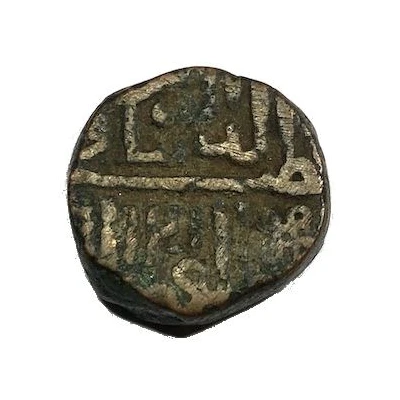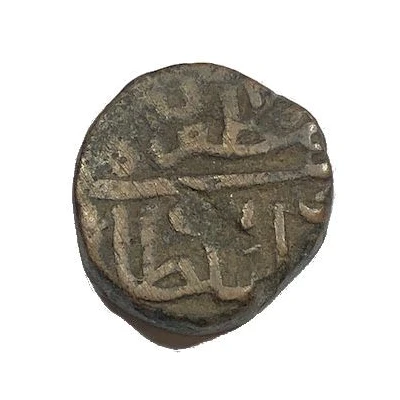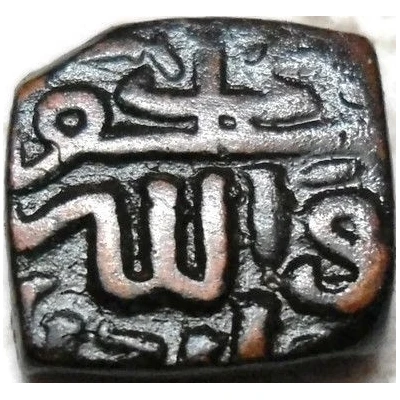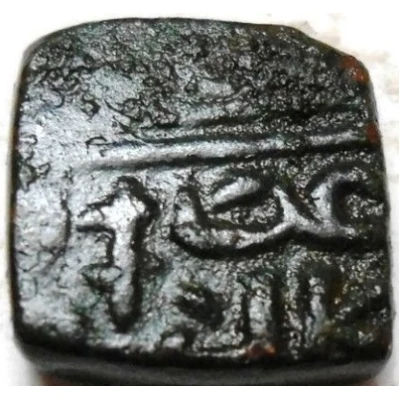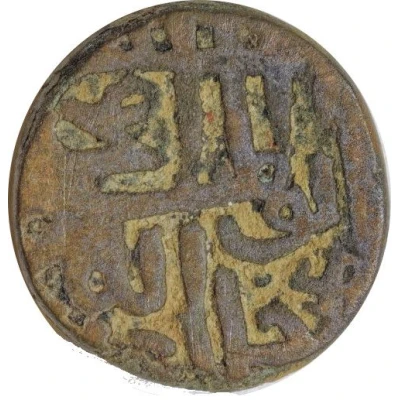
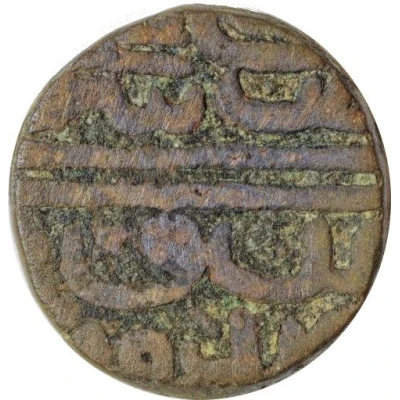

1 Falus - Muhammad Bin Muzaffar
| Copper | 9.63 g | 18 mm |
| Issuer | Sultanate of Malwa (Indian Sultanates) |
|---|---|
| Type | Standard circulation coin |
| Years | 960-963 (1553-1556) |
| Calendar | Islamic (Hijri) |
| Value | 1 Falus |
| Currency | Tanka (1401-1562) |
| Composition | Copper |
| Weight | 9.63 g |
| Diameter | 18 mm |
| Thickness | 4.79 mm |
| Shape | Round (irregular) |
| Technique | Hammered (weight varies 10-10.4g; 96 rati) |
| Orientation | Coin alignment ↑↓ |
| Demonetized | Yes |
| Updated | 2024-10-05 |
| Numista | N#334741 |
|---|---|
| Rarity index | 94% |
Reverse
Duribat (or darb)?? 'urf mandu fi sanah
Edge
Plain
Comment
Mint ManduAfter the death of Malwa governor, Sauja’at Khan in Hijri Year 962, the seat of province moved from Mandu to Sarangpur. The successor of Sauja’at Khan, Miyan Bayazid engaged in a scramble to gain power. He overcame all his rivals and sat on the throne of Malwa, under the title Baz Bahadur. Baz Bahadur died in Hijri Year 965, after the fall of Mandu.
Coins in the name of Muhammad Bin Muzaffar were issued in Malwa from AH 962 till AH 964. So, one theory is that these coins were struck by Daulat Khan Ajiyala who had his initial headquarters at Sarangpur, and had declared himself independent, until his defeat by Baz Bahadur. These coins were struck in the name of ‘Muhammad’.
Coins in the name of Muzaffar were issued in silver and copper. Silver denominations of Tanka and Half-Tanka were issued. Copper denominations like Falus and Half-Falus were issued. Both in Falus and Half-Falus there are two weight standards. The weight of early issues of Falus and Half-Falus ranges around 10g and 5 g respectively, while the weight of the later issues were reduced to 7.2g and 3.4g respectively.
Interesting fact
One interesting fact about the coin is that it was issued during the reign of Muhammad bin Muzaffar, who was the last ruler of the Sultanate of Malwa before it was annexed by the Mughal Empire.
